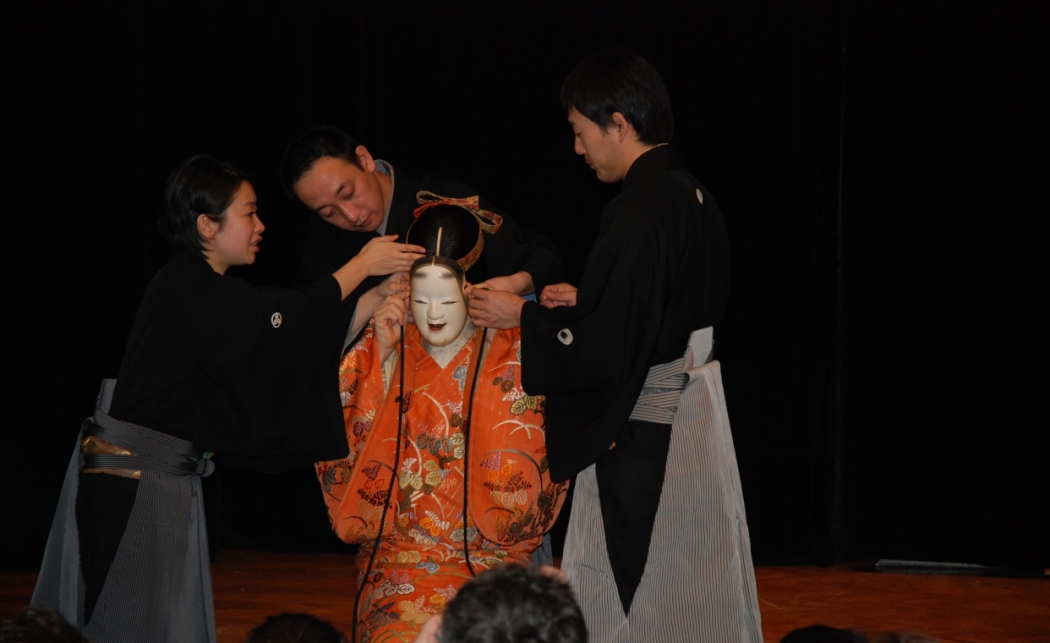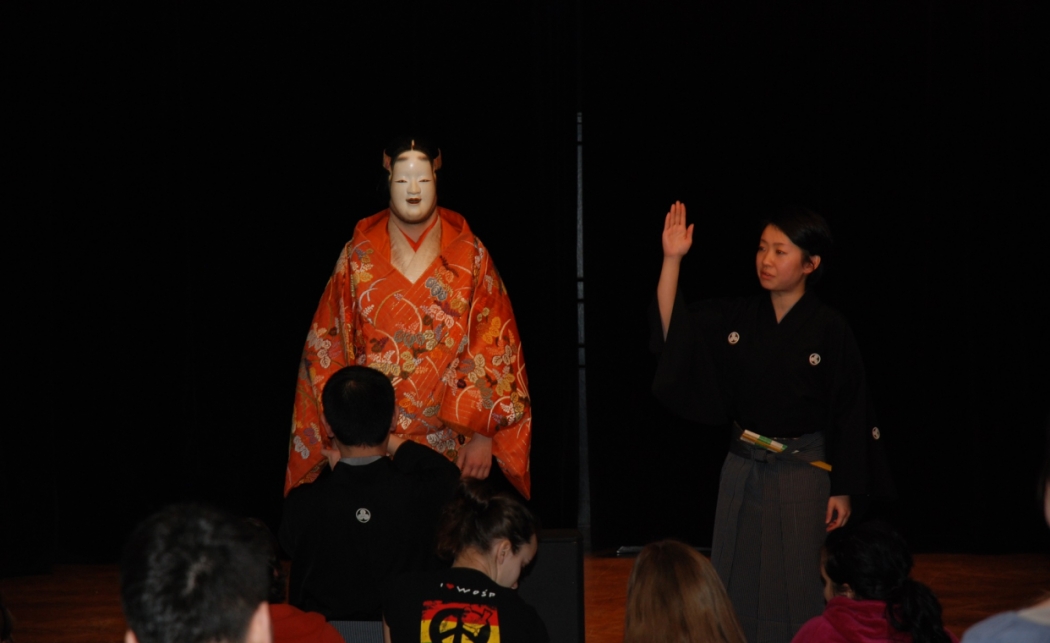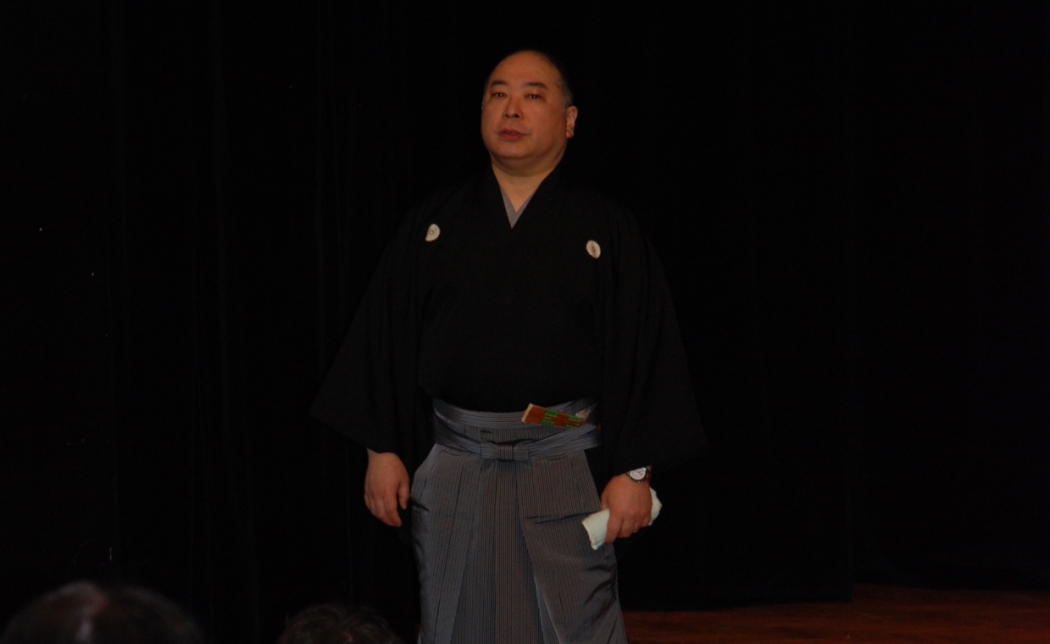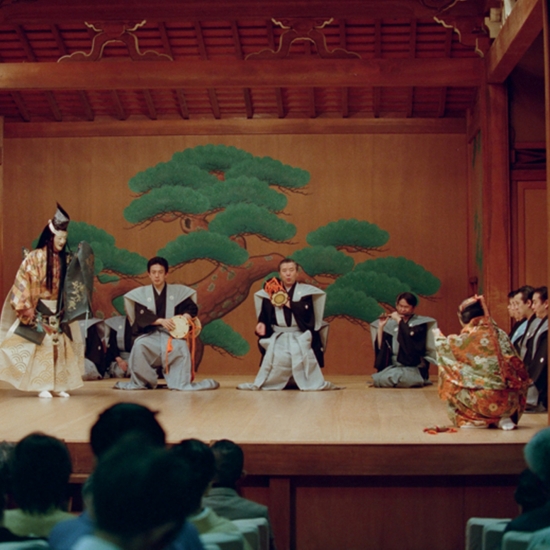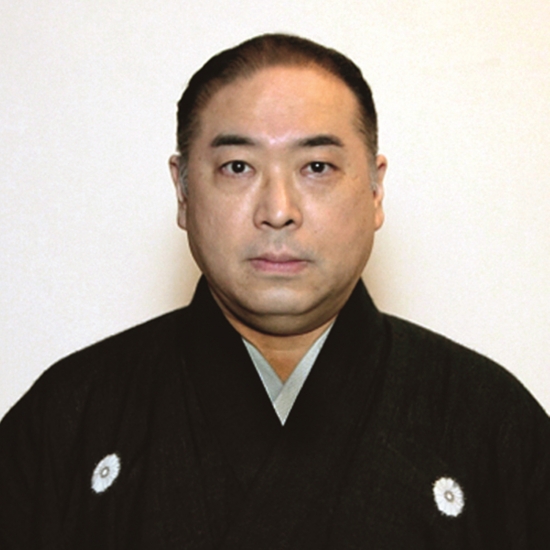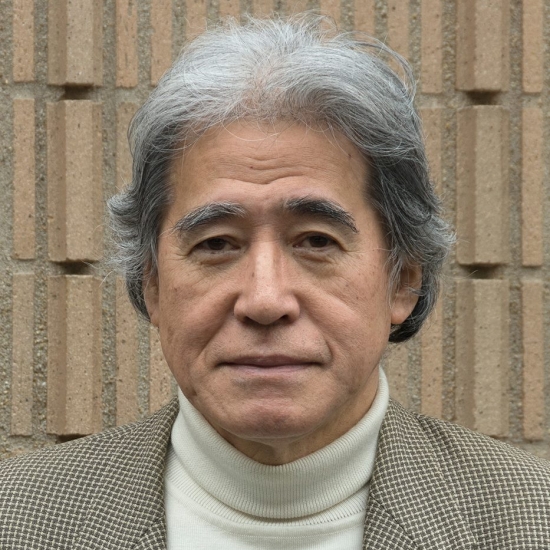Noh Actor’s Craft
The meeting dedicated to Noh theatre will comprise a demonstration of actor’s craft. Tetsunojō IX Kanze and the members of Tessenkai Theatre will perform short stage forms shimai (dances). The performance of the main actor will be accompanied by songs sung by a choir, static dances of the kuse type and dynamic ones of the kiri type, which constitute the basic skill of shite actors. Tetsunojō IX Kanze, together with the director of the performance Chinkon, Ken’ichi Kasai, will delineate the aesthetics of Noh theatre, as well as speak about the musical structure of the performance, the costumes, and the role of masks (omote) and how they are used.
Noh theatre is one of the genres in Japanese classical theatre. The word Noh means skill, talent, and art. It is a poetic theatre and a musical one, whose classical form emerged in the 14th century. The key role in the shaping of the genre was played by Zeami (1364? – 1444?) – an actor, dramatist, and theoretician. The main axis of Noh performances is the transformation of the protagonist, played by the shite, the principal actor. On stage there is also the second actor waki. The actors are accompanied by musicians playing the ōtsuzumi, kotsuzumi and taiko drums, and the nōkan flute, as well as by a choir. The actor’s craft consists in dance, singing, melodeclamation, and mask expression. In Poland, Noh has been the most popular form of classical Japanese theatre since its first presentation in 1980. Thanks to regular and frequent presentations of Noh performances, Polish translations of plays and theoretical dissertations, as well as workshops given by the masters of this art, it has gained a wide circle of enthusiasts. In 2001 Noh theatre has been proclaimed Masterpiece of the Oral and Intangible Heritage of Humanity (inscribed on the UNESCO list).
Jakub Karpoluk
